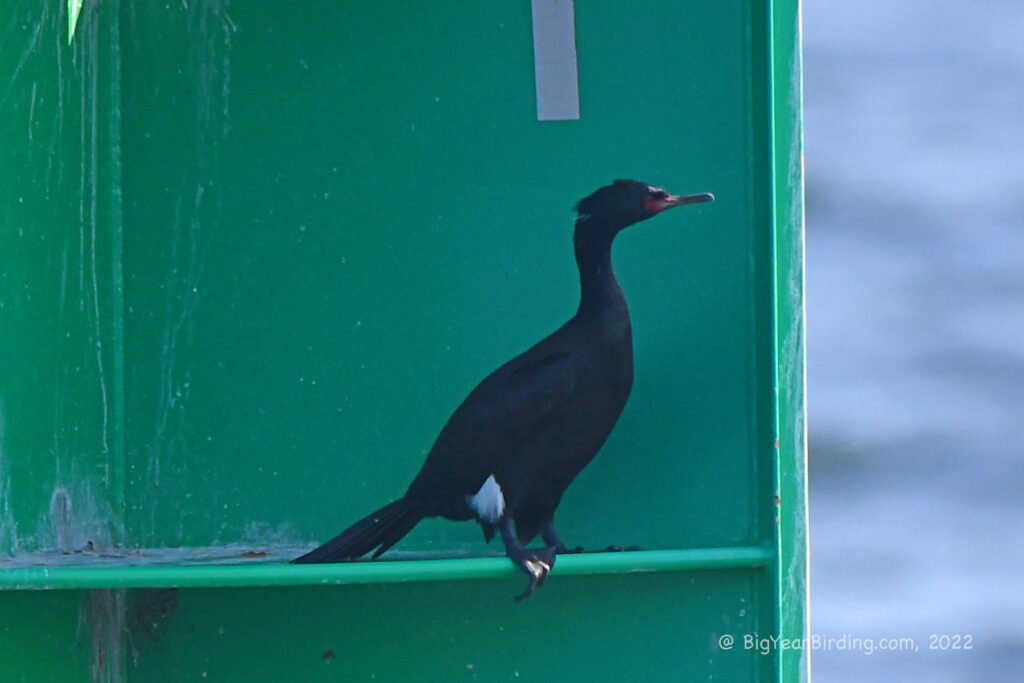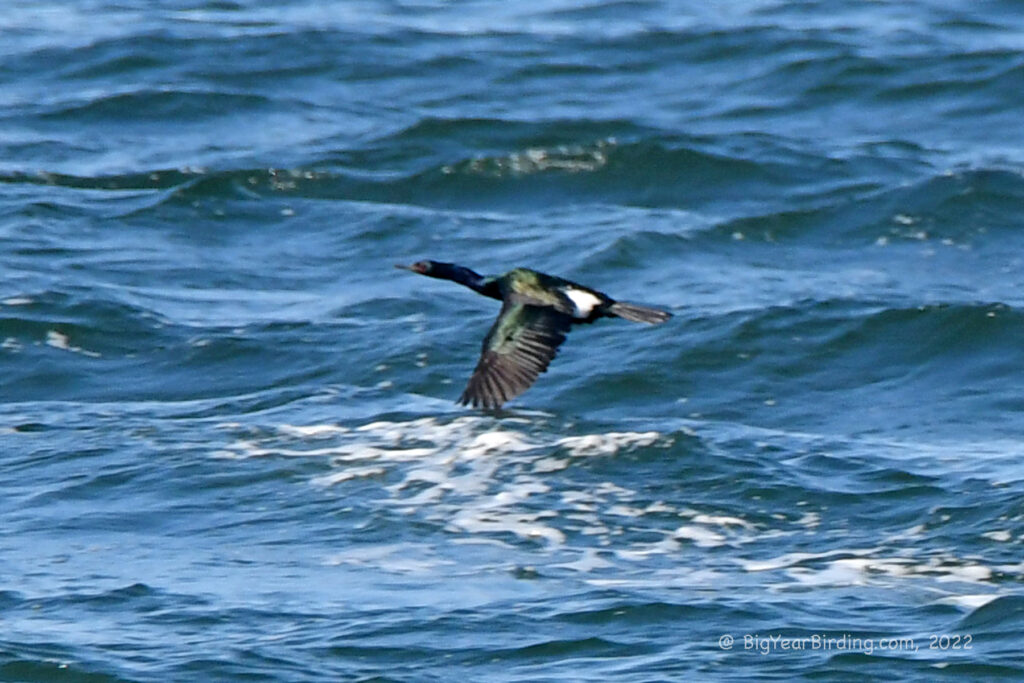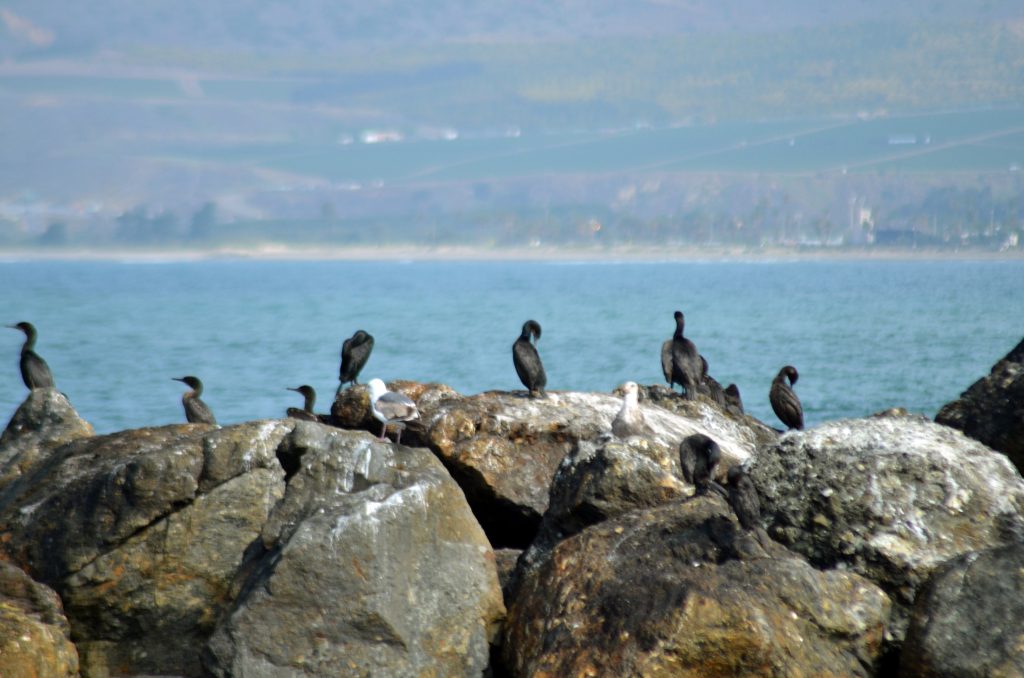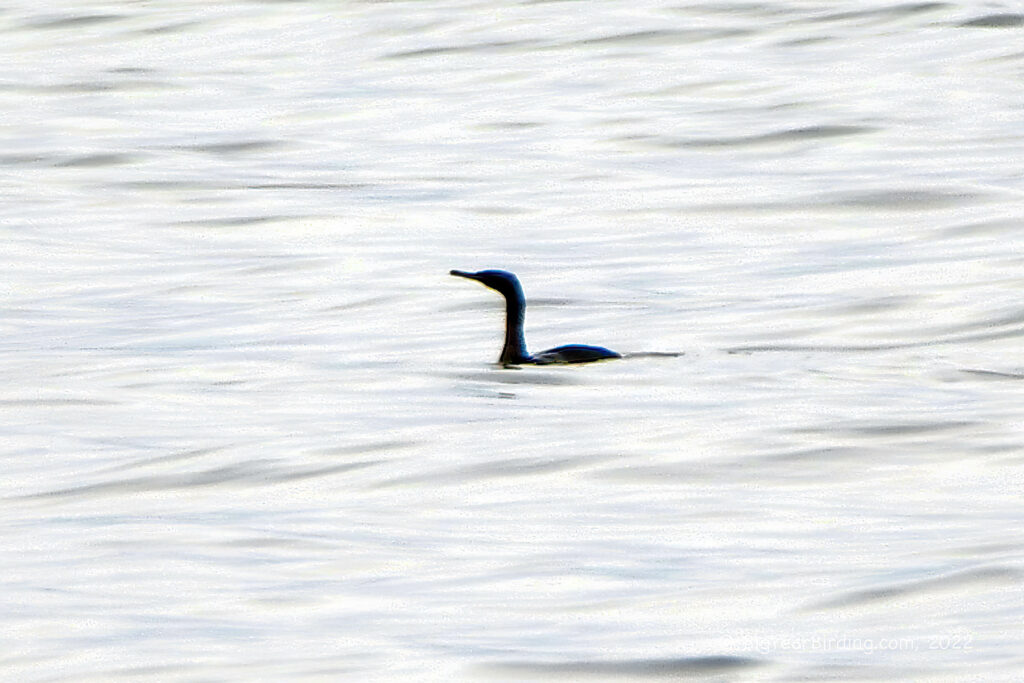
The Pelagic Cormorant (Phalacrocorax pelagicus) is a seabird that can be found in the coastal areas of the North Pacific. It is a small to medium-sized bird, measuring between 18 and 22 inches (45-55 cm) in length, with a wingspan of about 34 inches (85 cm). Adults typically weigh between 1.3 and 2.2 pounds (600-1000 grams), with males being slightly larger than females.

The Pelagic Cormorant can be easily distinguished from other cormorant species by its small size and short tail. It has a sleek black body, with a greenish gloss on its back and wings. During breeding season, it develops small white patches on its thighs, as well as white plumes on its head and neck. Its bill is thin and sharply pointed, and its eyes are a bright blue-green color.
This species is non-migratory and can be found year-round in its range. It typically breeds on rocky cliffs and islands along the coast, building its nest out of seaweed, grasses, and other materials. Breeding season occurs between April and August, during which time the male will perform courtship displays such as bowing and bill-circling. Females will lay 2-4 eggs, which both parents will incubate for approximately one month.
Pelagic Cormorants feed on a variety of fish and other marine life, which they catch by diving underwater. They can dive to depths of up to 130 feet (40 meters) and stay underwater for up to a minute. They are also known to forage in small groups, sometimes in association with other seabird species.

Although not currently considered threatened, the Pelagic Cormorant has experienced declines in some areas due to habitat degradation and human disturbance. Conservation efforts include protecting breeding colonies, minimizing disturbance to nesting birds, and monitoring populations to ensure they remain stable.

